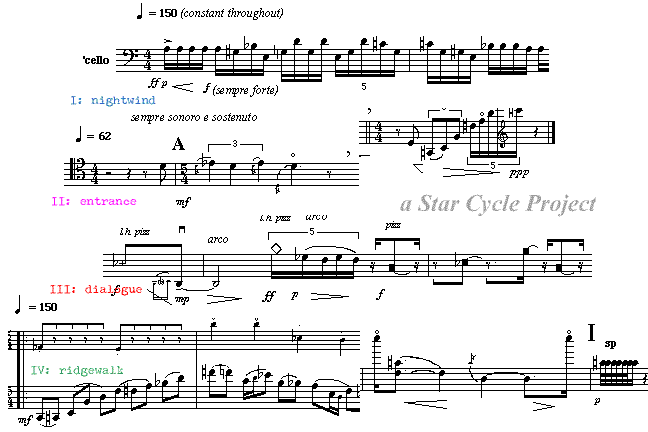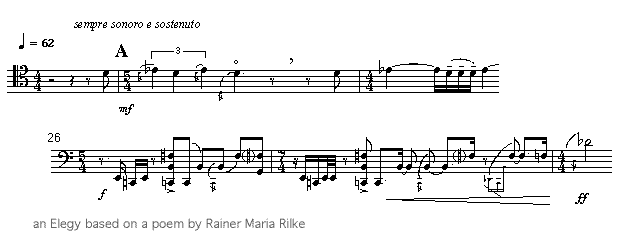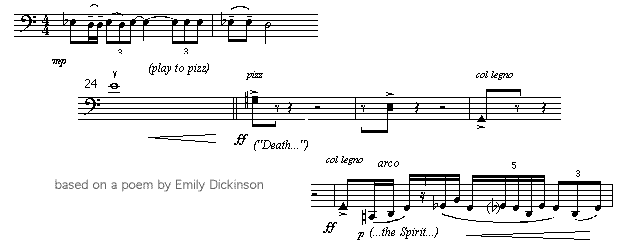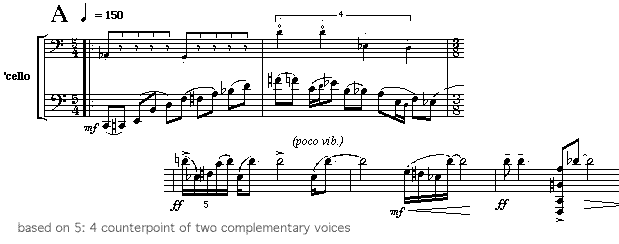
| go to scores of I: | 1 | 2 | II: | 1 | III: | 1 | 2 | IV: | 1 | 2 | 3 |
| NEW: download MP3 of a performance model of m4: frames I-IV [c. 9' 10" 2.1 Mb]
| NEW: Download PDF of m4: for solo cello I-IV (Portable Document File) |
| listen to a m4: frame I: nightwind; IV: ridgewalk (REQUIRES QuickTime) |
About m4 and frames
Instead of a cycle of movements which characterizes the other Star Cycle compositions
for solo instruments, one might best think of m4 as something more like a set of frames.
Frames are what I think of a 'windows' on, or snap shots off, different qualities of
musical movement. In this regard, frames are rather shorter and more fragmentary
than movements, but at the same time are more suited for exploring a wider diversity
of new ideas. One might think of them literally as a collection of photos from a wild
place which are tossed as it were upon the performance table. We see a new species
of plant here, an outline of a fearsome animal there, even perhaps a hint of free running
white water. So in a way, one can pick up any frame or window one feels attracted to and
set to work.
The first frame of m4 featured here introduces the set with a wildly fast and rugged
stream of musical figures which unfolds within a non-stop, forward-driving tempo.
There is a marked contrast between the complexity of what one hears, on the one
hand, and the relative simplicity of the notation on the other. This is because we hear
a stream of serpentine movement, moving in unexpected ways over the entire instrument.
But the notation slows this down, so to speak, visually, by using a neutral 4/4 meter
to structure the whole, which, although it does not change, is very fast. The quarter
note here equals 150 beats per minute. This means that the temporal resolution
the performer must deal with here is very high in deed, as is the density at an
average of about 10 sounds per second (Sps). Besides its simplicity, the great
advantage of this style of notation is that one can begin very slowly and gradually
with practice work on getting the tempo faster and faster while at the same time
not sacrificing any rhythmic precision.
About the rhythmical
ground of change
This first frame of m4 is based on a very general, and, to my way of looking at
musical movement, important concept, ie, that of a rhythmical ground. The basic
idea here is this:



